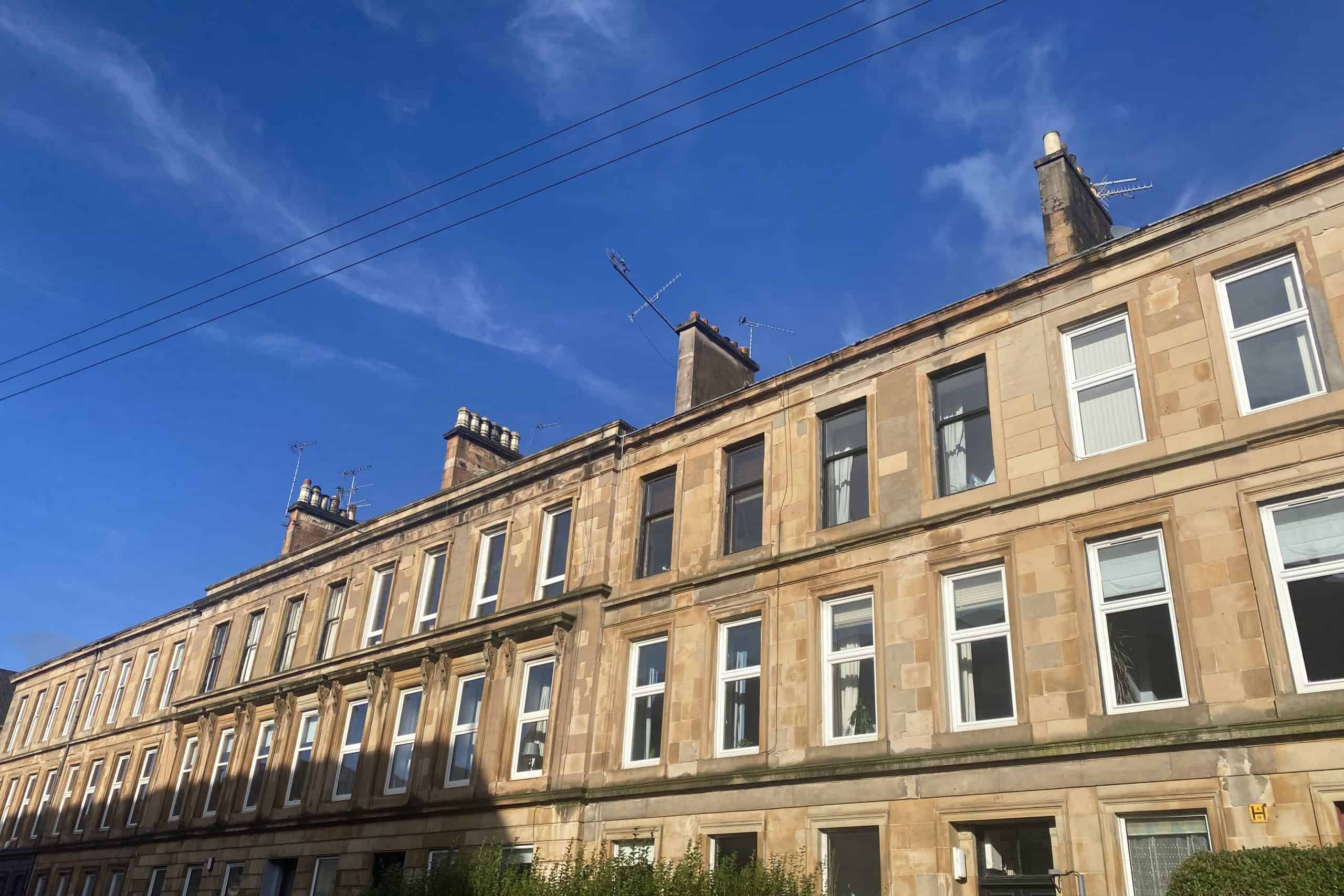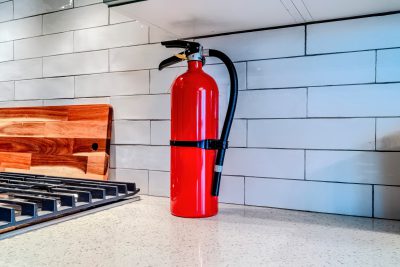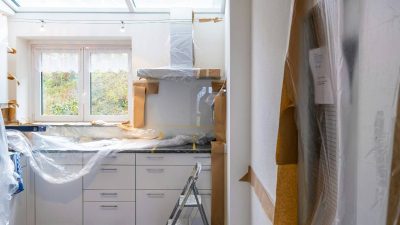Many tenement buildings have chimneys, and repairs are rarely the sole responsibility of one flat owner. Knowing who is responsible for the chimneys in a tenement building is essential when dealing with this type of repair. Most chimneys on tenement buildings carry the smoke and fumes from several fireplaces in neighbouring properties. Even if the fireplace in a tenement flat is no longer in use, the flat owner still has a legal duty to maintain and repair the chimney. The type of chimney on a tenement building determines who is responsible for its repairs and maintenance.
Types of chimneys
There are two main types of chimneys found on tenement buildings: wallhead and mutual. Wallhead chimneys sit on top of the front and back walls of a tenement and tend to be tall. They were often built to stand above the ridge of the roof where the airflow is strong enough to allow the chimney to draw. In contrast, mutual chimneys sit on top of a gable wall. A gable wall is the supporting end wall of two sides of a sloping roof. Mutual chimneys will often carry flues from the two neighbouring tenements on either side of the gable wall.
Why do chimneys need repairs?
Although they may no longer be in use, repairs to chimneys are still necessary. Sitting on the top of buildings, chimneys are exposed to the weather and can be at risk of collapse or dislodgement if not properly maintained. Leaning or cracked chimneys and leaning chimney pots are especially dangerous and require immediate attention. Additionally, any plant growth on a chimney suggests there may be a damp problem. Plant growth can lead to cracks and roots can force stones apart, leading to further damage. The build-up of plant growth and moss can also speed up the decay of the chimney.
Chimney flues may also need repairs. Even without a working fireplace, maintaining ventilation through the flue is important to keep hidden areas behind wall linings dry. Each flue which leads to the chimneyhead serves a single fireplace. Flues were often built of brick and, overtime, combustion products, such as salts from coal and gas fires, may have damaged the brickwork. This damage can lead to bricks falling into the flue and causing blockages. If there are blockages or problems with the flue, it can be beneficial to install a flue liner to maintain ventilation and airflow.
Who is responsible for chimney repairs?
The title deeds of each tenement flat should state whether chimneys are common property. If it says they are, then each flat owner shares the cost of the chimney repair. If there is nothing in the title deeds about the ownership of chimneys, then costs are shared between the flat owners whose flues lead to the chimneyhead.
Repair costs for wallhead chimneys are generally shared between all owners in a tenement block. For repairs to mutual chimneys on gable walls, the flat owners on both sides of the gable wall share the cost.
Repairs to chimney pots are the responsibility of the owner whose flue leads to that chimney pot. To find out which chimney pot belongs to each owner, a chimney sweep can let off a smoke bomb in the fireplace to see which chimney pot the smoke exits from. This is also a good test of flue ventilation.
Get professional help
It is important to get professional help when organising chimney repairs. With repairs to chimneyheads or pots, it is necessary to hire a roofing contractor. With repairs to flues, a chimney sweep will be able to help.
Chimney repairs can be challenging but they are an important part of maintaining a tenement building. For more information on chimney repairs and maintenance, including more details on the types of repairs needed and what to look out for, as well as helpful diagrams, click here.












